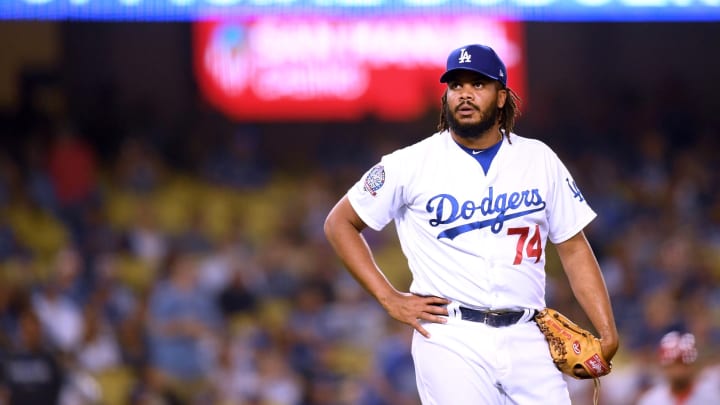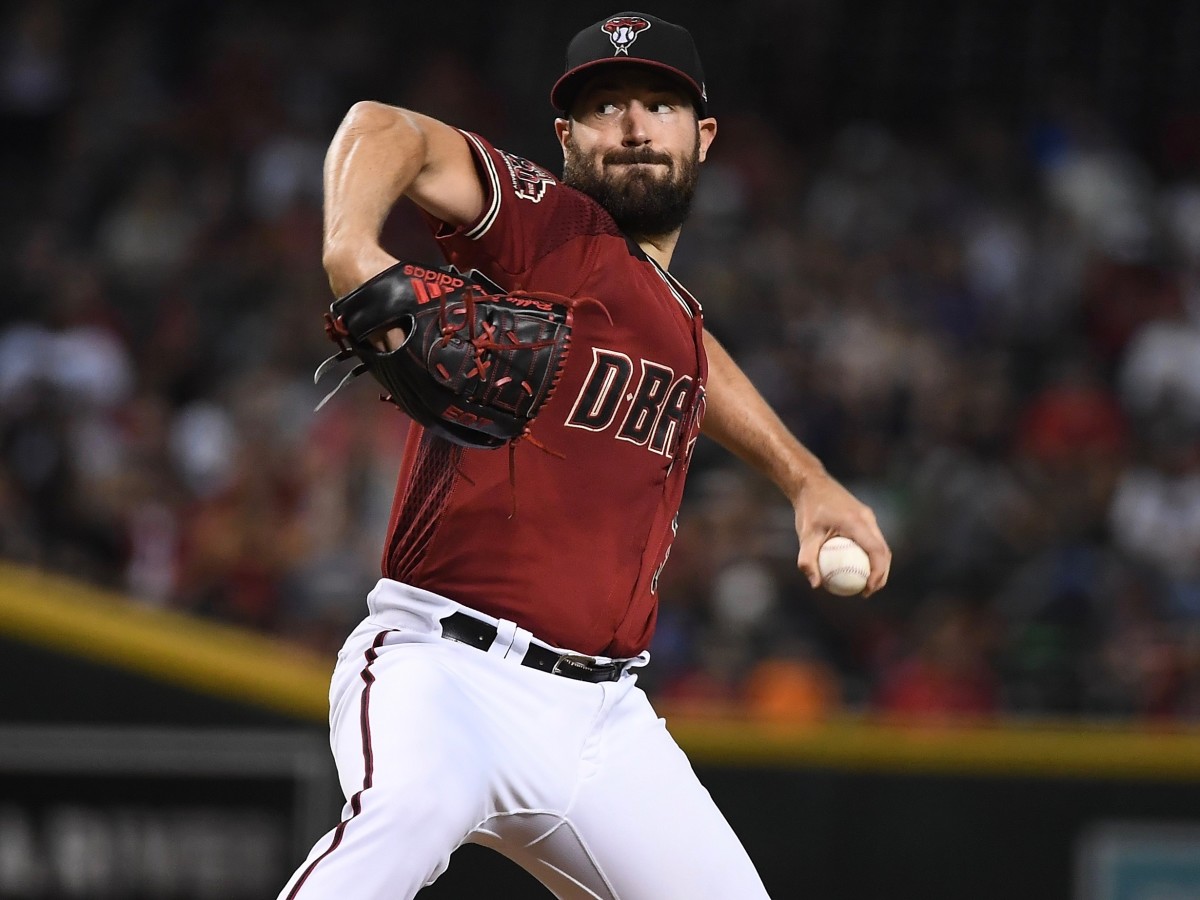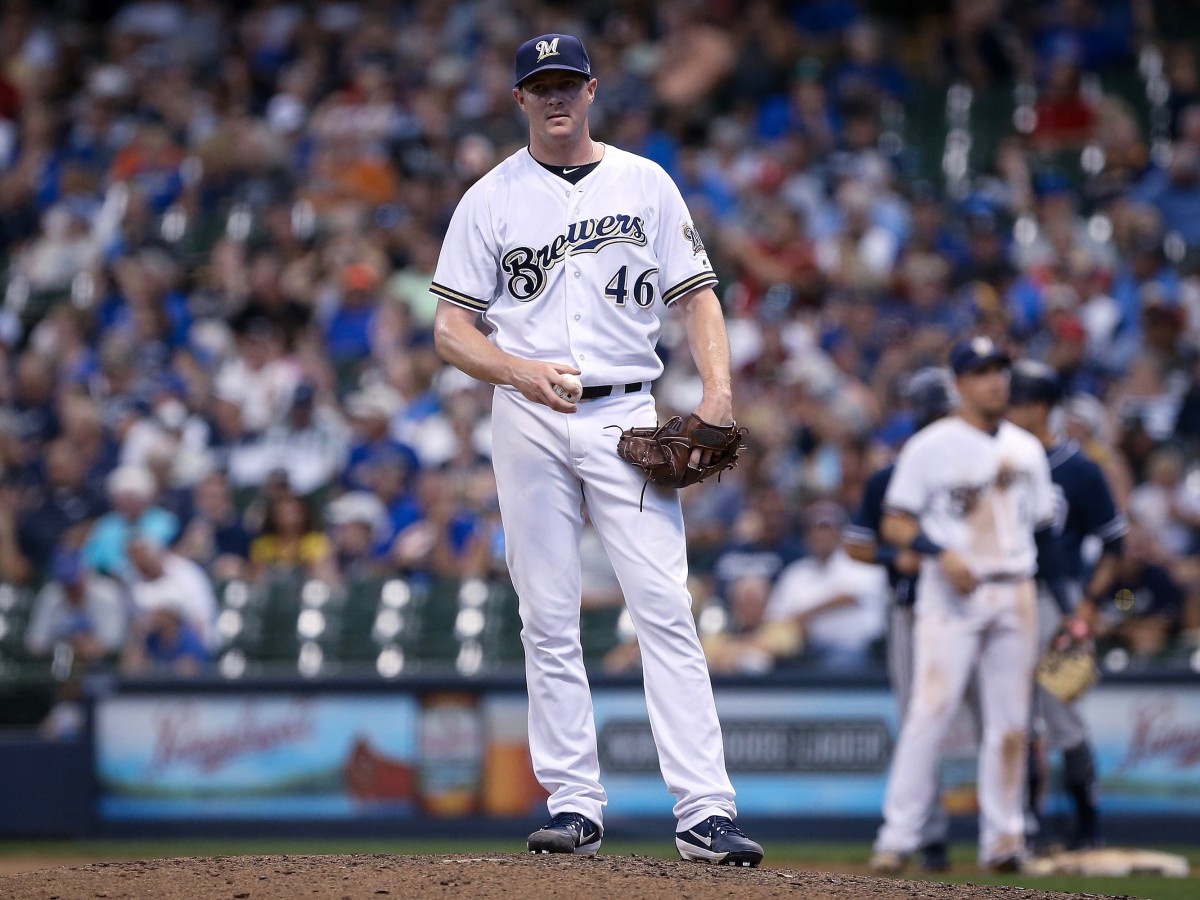What is the X-Factor for Every Playoff Contender?

Since baseball's playoff picture is extremely crowded and only two teams (the Boston Red Sox and Cleveland Indians) appear to be safe bets for the playoffs, the SI.com staff identified the players, units or themes that could make the difference between making and missing the playoffs for the 12 teams remaining in the playoff hunt.
Houston Astros: Forrest Whitley
It’s really injuries, for the Astros, although that’s boring and obvious and true for every club. The last time their three best hitters – Jose Altuve, Carlos Correa, and George Springer (with apologies to Alex Bregman)—all appeared in the same lineup was June 25. They’ve gone 25-22 since, and their lead over the A’s had dwindled from seven games to no games at all.
But the 6’7”, 20-year-old Whitley’s a more interesting x-factor. He’s only worked 26 innings in Double-A this year—after being suspended for the first 50 games of the season due to a drug violation and then straining an oblique—and a total of 137 frames as a pro. But he’s also the consensus top pitching prospect in the game, as his absurd minor league strikeout rate of 13.3 per nine innings suggests. His low innings total won’t allow him to join Houston’s rotation this year, but he could make his debut as a David Price-in-`08 type of bullpen weapon down the stretch—and even in October, assuming the club’s health and the A’s cooperate. — Ben Reiter
New York Yankees: Gleyber Torres
It’s no coincidence that the Yankees won 15 of 16 as soon as Gleyber Torres was promoted to the Yankees’ big-league roster. The young gun added instant offense to an already stacked lineup, hitting .294 with 15 dingers and a 142 wRC+. Well, following a trip to the disabled list for a strained right hip, he’s hit an abysmal .194 with a 59 wRC+, which is well below league average. The success of New York’s stretch run could very well lie on the shoulders of a player who was, for a brief time, a regular middle-of-the-order bat. Especially without Aaron Judge and Gary Sanchez, the Yankees will need someone else to step up and carry some of the weight offensively, and Torres is the logical player to do just that. A recent night off has seemed to rejuvenate him—the 21-year-old has collected multiple hits in three of his last four games—and perhaps that is just what is needed for the slumping Bombers. — Kenny Ducey
Oakland A’s: Mike Fiers
Nothing about Oakland’s surge has been more miraculous than its rotation. It looks like Sean Manaea and a bunch of over-30 castoffs and retreads. In August, though, the group has combined for a league-best 2.50 ERA—and that’s despite the fact that Manaea has been poor this month, with a 5.31 ERA over four starts. So the heavy lifting has been done by Brett Anderson, Trevor Cahill, Mike Fiers and Edwin Jackson, not one of whom was even on the club’s Opening Day roster.
A year ago at this time, the soft-tossing, 33-year-old Fiers was on his way out of the Astros’ rotation. He finished the season with a 5.22 ERA, and didn’t make Houston’s postseason roster. Thanks in part to a slight tweak to his repertoire—he’s essentially eliminated his slider and is throwing more cutters—his ERA has dropped by a full two runs this season. For a pitcher whose rarely scrapes 90 mph, small adjustments can make all the difference. Since he joined the A’s via waiver trade from the Tigers on Aug. 6, he’s allowed just three runs—and just 12 baserunners—in 18 innings.
In fact, he hasn’t yielded more than three earned runs in an outing since June. That suggests he might not be experiencing simply a hot streak, but has become the sort of dependable starter the A’s need to sustain their improbable run. Houston’s reject might prove to be its undoing, and Oakland’s savior. — Ben Reiter
Seattle Mariners: Robinson Canó
Robinson Canó can’t be an x-factor in the playoffs, since his performance-enhancing drug suspension from earlier in the year means that he isn’t eligible for the postseason. But he can certainly be such a factor in Seattle’s push for the playoffs. This team has never given themselves much margin for error—see: their penchant for one-run games, their negative run differential—which means that they need every last bit of help that they can get, and Canó’s return can provide quite a bit of that. The Mariners’ bats have cooled off as they’ve battled through the last month and a half, with a .733 OPS from the first half dropping to .696 in the second. Jean Segura has taken a step back; Kyle Seager has taken two steps back; even Nelson Cruz and Mitch Haniger have slipped just slightly. Adding Canó’s .821 OPS back into that lineup is a potentially crucial boost, then.
Cano’s August 14 return came at a time when the team needed something to change, just after a 6-8 stretch that had dropped them from second place to third. The Mariners still have an uphill climb here, and it seems more likely than not that the longest playoff drought in the four major professional sports will continue this year. But they still have a chance, however slim—with two series remaining against their chief competition, Oakland—and the return of Cano’s bat just might be a difference-maker to a team that’s needed one. — Emma Baccellieri

Arizona Diamondbacks: Robbie Ray
Thanks in large part to the 1-2 punch of Zack Greinke and Patrick Corbin atop the rotation and the league’s best defense, Arizona has rallied to take hold of the NL West. But surviving the advances of the Dodgers and Rockies, as well as a brutal September schedule that may well be the toughest in baseball, will require a third starter to step up his game: Ray. Last year, the lefty was a revelation, with a 2.89 ERA and 218 strikeouts in 162 innings. This season, though, he’s crumbled, with a 4.91 mark through 80 2/3 frames. An oblique injury cost him a big chunk of time, and his velocity is slightly down, but more problematic is his shaky control. His 12.6% walk rate is third highest among all starters with 80 or more innings on the year and a big spike from last year’s 10.7. With a bullpen that lacks a true shutdown arm and an offense that’s boom or bust, Arizona will need its starters to lead the way. That includes Ray, who has to get on the right track before it’s too late. — Jon Tayler
Atlanta Braves: Dansby Swanson
After a truly horrifying 2017 (his .636 OPS was fifth-worst in baseball), Dansby Swanson seemed early this year to have turned things around. He hit .287 through April. Since then it’s been a season predictable only in its inconsistency: He was 25% worse than the league in May, about average in June, 27% worse in July and about average again so far in August. His defense remains good, and he has been a key contributor at shortstop to a team with the second-best defensive efficiency in the league, but if he can turn it on at the plate, he might be able to carry the Braves to their first playoff appearance since their rebuild began after the 2013 season. — Stephanie Apstein
Chicago Cubs: The starting rotation
Any hopes of Yu Darvish riding to the Cubs’ rescue down the stretch are now gone after news that the Japanese ace is done for the year due to a triceps strain. Injuries cost Darvish most of the season and left him ineffective when available—an appellation that works for most of Chicago’s starting five. Veteran Jon Lester has been clobbered in the second half, with an 8.16 ERA in 28 2/3 frames across six starts. Lefty Jose Quintana has been middling at best, with a 100 ERA+ on the dot. Kyle Hendricks can’t solve his first-inning woes: 24 of his 66 runs allowed this season have come in the leadoff frame, for an ERA of 8.31 in that spot. Tyler Chatwood couldn’t throw strikes, with a ghastly 8.2 walks-per-nine rate getting him booted from the rotation, and fill-in Mike Montgomery is down with a shoulder strain. Cole Hamels has worked miracles since arriving at the trade deadline, allowing just three runs in 25 innings, but he can’t do it alone. The Cubs have plenty of offense (and probably more bats than lineup spaces), but the rotation must improve for Chicago to go deep into October. — Jon Tayler
Colorado Rockies: The Bullpen
The Rockies’ bullpen has been a sore spot all season, making them one of just three teams with a relief ERA over 5.00. (The other two are the Royals and the Marlins, so... not exactly the company that any playoff-hopeful squad should want to keep.) In the second half, though, their situation here has looked a bit better. What’s responsible? The acquisition of Seung Hwan Oh, the continued excellence of Adam Ottavino, and the set of improvements made by Bryan Shaw.
Shaw was one of the big free agents that the team added to the bullpen last winter, a strategy that was supposed to make relief pitching a strength. Instead, he began the year with a miserable stretch that put him on pace for his worst season ever. In the first half, he walked more than five batters per nine innings, with a 7.23 ERA; over the last month, he’s cut those figures in half after tweaking his pitch selection to rely almost exclusively on his cutter. But there’s been no second-half turnaround for other central bullpen figures, such as Wade Davis and Jake McGee. Each has struggled enormously—which is why we opened this section by saying that Colorado’s second-half relief pitching has looked “a bit better,” rather than actually looking good. Down the stretch, their ability to maintain that recent progress could be key. Between the team’s bats and their surprisingly good rotation, they can prop up a shaky bullpen. They just can’t do anything about one that feels like an earthquake. – Emma Baccellieri
Los Angeles Dodgers: The Bullpen
There was some hope around Chavez Ravine that the return of closer Kenley Jansen from an irregular heartbeat last week might help shore up a sieve-like bullpen. The relief corps has been a concern all year—it’s blown 25 saves, second-most in baseball, and has recorded a league-leading 31 losses—but it was even worse without its ninth-inning man. In his absence, relievers had lost four consecutive games, all intra-division, in their opponents’ last at bats. Then Jansen came back and immediately surrendered three home runs in his first two games, both of which L.A. lost. The Dodgers now sit 3.5 games out of the second wild card spot. There is still time for a fix, either with the cast the team already has or with a player who passes through waivers, but it’s getting bleak. — Stephanie Apstein

Milwaukee Brewers: Corey Knebel
Knebel entered the 2018 season as one of baseball’s most feared relievers. Now, the former Brewers closer has a 5.08 ERA and is headed to Triple A Colorado Springs to work on his mechanics. If Milwaukee can properly rehabilitate Knebel, then perhaps he can return to a stacked Brewers bullpen that features Josh Hader (1.47 ERA and 16.0 K/9) and Jeremy Jeffress (1.33 ERA). That would give the Brewers a 7-8-9 combo to resemble the Royals’ 2015 hydra of Kelvin Herrera, Wade Davis and Greg Holland and ease the pressure on a thin starting rotation. If Knebel doesn’t bounce back, then the Brewers will likely have to test a rotation that doesn’t appear ready for a deep postseason run. — Gabriel Baumgaertner
Philadelphia Phillies: The Defense
The Phillies feel a lot like the 2015 Chicago Cubs, an unlikely team capable of making a run to the NLCS despite low preseason expectations. Manager Gabe Kapler survived a bad month of April to become one of the home-run hires of the season, Aaron Nola is firmly in the hunt for the NL Cy Young award and Rhys Hoskins is a legitimate power bat to steady the middle of the order. The biggest problem is currently the defense, highlighted in this piece by Sports Info Solutions’ Mark Simon. Simon points out that the Arizona Diamondbacks, statistically the game’s best defense, have saved an astonishing 200 runs more than the Phillies.
Measuring defense remains a challenging endeavor, and the metrics can certainly be shoddy, but centerfielder Odubel Herrera is considered one of the worst defensive centerfielders by every outlet (Baseball Prospectus, FanGraphs) and they’ve struggled at shortstop (Scott Kingery and J.P. Crawford are well below average, and now they’ve turned the position over to the generally limited Asdrubal Cabrera).
"I've seen some of the things floating around about DRS," Phillies manager Gabe Kapler said when asked about the defense on Monday. "What I'd submit is our defense has not been perfect. From the eye test, just from watching in the dugout and looking at our guys, we can make more plays than we've made. The cool thing is that we have the talent to make those plays."
Maybe all the chatter about the Phillies’ defense is overblown, but poor defending teams typically don’t make postseason runs. Kapler is keen enough to notice the issues, so it’ll be intriguing to see if he makes any significant tweaks down the stretch. — Gabriel Baumgaertner
St. Louis Cardinals: Harrison Bader
The emergence of Bader has come at a fantastic time for St. Louis, who has been able to give Marcell Ozuna a rest for his ailing shoulder and withstand the crash back to earth taken by Matt Carpenter. He enjoyed a hot week against a pair of capable opponents in Washington and Milwaukee, and has hit .333 with three homers over the past two weeks, but now he’s going to have to shoulder a bit more of the load offensively as the cruisin’ Cards try to fend off the large crop of playoff-hungry teams in the NL. He’s lightning quick, he hustles, he makes diving plays and he picks up timely hits. Bader will be a key component of this team through October. — Kenny Ducey
